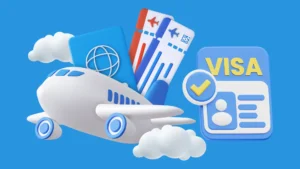
Canada’s Express Entry program has long been a key route for skilled workers seeking permanent residency (PR) in the country. Since its launch in 2015, the program has offered an efficient and streamlined pathway for immigrants, helping to meet the country’s labor market demands by bringing in highly skilled professionals. Over the years, Canada has made several adjustments to ensure the system meets its economic needs while maintaining fairness and transparency for applicants.
In 2024, Canada’s Express Entry program has undergone significant updates, marking changes to the eligibility criteria, the Comprehensive Ranking System (CRS) score distribution, and introducing new categories for targeted draws. This blog will explore the latest updates in the Express Entry system and what they mean for prospective immigrants.
What is the Express Entry Program?
The Express Entry program is an online system used to manage applications for three of Canada’s economic immigration programs:
Federal Skilled Worker Program (FSWP): Aimed at skilled workers with foreign work experience, this program evaluates applicants based on factors like education, work experience, and language ability.
Federal Skilled Trades Program (FSTP): This stream targets skilled workers in specific trades, such as electricians, plumbers, and chefs, who have qualifications and experience in their respective fields.
Canadian Experience Class (CEC): Focused on individuals with Canadian work experience, the CEC is popular with international students and temporary foreign workers who have lived and worked in Canada for at least a year.
Applicants who meet the eligibility criteria for one of these programs enter the Express Entry pool, where they are ranked according to the Comprehensive Ranking System (CRS). The highest-ranking candidates receive Invitations to Apply (ITA) for permanent residency during periodic draws conducted by Immigration, Refugees, and Citizenship Canada (IRCC).
Key Updates to Canada’s Express Entry Program in 2024
Introduction of Category-Based Selection
One of the most significant updates to the Express Entry system is the introduction of category-based draws. Prior to 2023, Express Entry draws focused primarily on candidates with the highest CRS scores, regardless of their specific occupation or industry. However, Canada has now begun targeting candidates based on specific economic needs and labor market demands.
These categories target candidates in high-demand sectors, such as:
- Healthcare: Nurses, physicians, and other healthcare professionals are in great demand due to the country’s aging population and ongoing healthcare needs.
- STEM (Science, Technology, Engineering, and Math): Software engineers, data scientists, and other tech professionals are crucial as Canada continues to expand its digital economy.
- Skilled Trades: Workers in construction, plumbing, and electrical trades are vital to infrastructure development.
- Transport and Logistics: Truck drivers and heavy equipment operators are essential in supporting supply chain needs.
- Agriculture and Agri-food: Farmers and workers in the food processing sector are critical to maintaining Canada’s food security.
By focusing on industry-specific draws, Canada can more directly address skill shortages in these key areas. Candidates in these categories may receive an invitation to apply even if their CRS scores are lower than general draw thresholds.
Changes to Comprehensive Ranking System (CRS) Scores
The CRS score remains the primary factor in determining an applicant’s rank in the Express Entry pool, but recent updates have adjusted the point distribution to reflect current priorities.
Points for Canadian Work Experience: In recognition of the value of Canadian work experience, more points are now awarded to candidates who have worked in Canada for at least a year. This is especially beneficial for international students and temporary foreign workers who may already be residing in the country.
Points for Siblings in Canada: If an applicant has a sibling living in Canada as a citizen or permanent resident, additional CRS points will be granted. This change aims to facilitate family reunification while encouraging skilled immigrants to settle in Canada.
French Language Proficiency: Canada has increased the number of points awarded to bilingual or French-speaking applicants. This reflects the government’s goal of promoting the country’s bilingual nature and supporting immigration to Francophone regions, particularly in provinces like Quebec and New Brunswick.
Points for Job Offers from Designated Sectors: Applicants with job offers from high-demand industries (as specified in the category-based draws) receive more points, further increasing their chances of receiving an ITA.
Increased Focus on Francophone Immigration
Canada has long emphasized the importance of Francophone immigration, particularly outside Quebec. In recent Express Entry updates, there is a renewed focus on attracting French-speaking immigrants. Applicants proficient in French can now earn more CRS points than before, enhancing their chances of receiving an ITA.
This change is part of Canada’s broader strategy to strengthen the Francophone presence in provinces outside Quebec. Francophone immigrants can contribute to the linguistic and cultural diversity of regions like Ontario, Manitoba, and the Atlantic provinces, which have growing Francophone communities.
Higher ITA Numbers and More Frequent Draws
In response to the increased demand for skilled workers and the need to address post-pandemic labor shortages, the frequency of Express Entry draws has increased. Draws are now held more frequently, sometimes multiple times a month, resulting in more Invitations to Apply being issued.
For 2024, the IRCC has set ambitious immigration targets, with plans to welcome over 465,000 permanent residents. A significant portion of these newcomers is expected to come through the Express Entry system. This means higher ITA numbers for eligible candidates, giving more people the opportunity to apply for permanent residency.
In addition to the increased number of ITAs, the CRS score cut-off for general draws has fluctuated, occasionally dropping lower than in previous years. This trend offers opportunities for candidates with slightly lower scores to still secure an invitation, particularly in category-based draws where specific industries are prioritized over CRS scores alone.
Pilot Programs Integrated with Express Entry
Canada has introduced several pilot programs that work in conjunction with Express Entry to address labor shortages in specific sectors and regions. These pilot programs provide additional pathways to permanent residency and are designed to fill gaps that the Express Entry program may not fully address.
Some examples of these pilot programs include:
- Rural and Northern Immigration Pilot (RNIP): This pilot helps smaller communities across Canada attract skilled workers by offering them a direct route to permanent residency.
- Agri-Food Immigration Pilot: This initiative is aimed at workers in the agri-food sector, a critical industry in Canada that often struggles to find sufficient labor.
- Atlantic Immigration Program (AIP): This program supports immigration to the Atlantic provinces (Newfoundland and Labrador, Prince Edward Island, Nova Scotia, and New Brunswick), which are often underrepresented in traditional immigration programs.
These pilots complement Express Entry by offering more tailored immigration pathways to meet specific regional and sectoral needs.
Processing Times and Efficiency Improvements
One of the biggest challenges in recent years has been the processing times for Express Entry applications. With a large backlog caused by the pandemic and a growing number of applications, wait times increased significantly. However, Canada has made considerable efforts to reduce processing times, aiming for an average of six months or less for most Express Entry applications.
To achieve this, the IRCC has implemented new digital tools and technologies to streamline the process and improve transparency for applicants. These changes have helped clear the backlog and ensured faster processing for new applications.
What These Changes Mean for Prospective Immigrants
The latest updates to Canada’s Express Entry system reflect a shift in how the country selects its immigrants, focusing more on targeted draws and addressing specific labor market needs. For prospective immigrants, this means:
Industry-Specific Opportunities: If you work in a high-demand sector such as healthcare, tech, or skilled trades, your chances of receiving an ITA are significantly improved, even if your CRS score is not as high as in previous years.
Increased Importance of Canadian Work Experience: International students and temporary foreign workers who have gained Canadian work experience will benefit from higher CRS scores and better chances of being selected.
French-Speaking Applicants: Bilingual candidates, especially those proficient in French, will find more opportunities to secure ITAs and integrate into Francophone communities across Canada.
Faster Processing Times: With the improvements to the system, applicants can expect quicker processing and faster transitions from temporary to permanent residency.
Conclusion
Canada’s Express Entry program remains one of the most popular and effective immigration pathways for skilled workers. The 2024 updates reflect a thoughtful approach to addressing labor market needs, attracting talent in key sectors, and encouraging Francophone immigration. For prospective immigrants, understanding these changes and aligning your profile with Canada’s evolving immigration priorities is crucial for success.

Constric Are the Best Immigration Consultancy Agency in Saudi Arabia


Unlocking Dubai Dreams: Your Simple Guide on How to Get Tourist Visa for Dubai from India 2025

How to Apply for Job in Dubai – Landing Your Dream Role 2025

Best Countries for Business Immigration: Your Gateway to Global Entrepreneurship 2025





